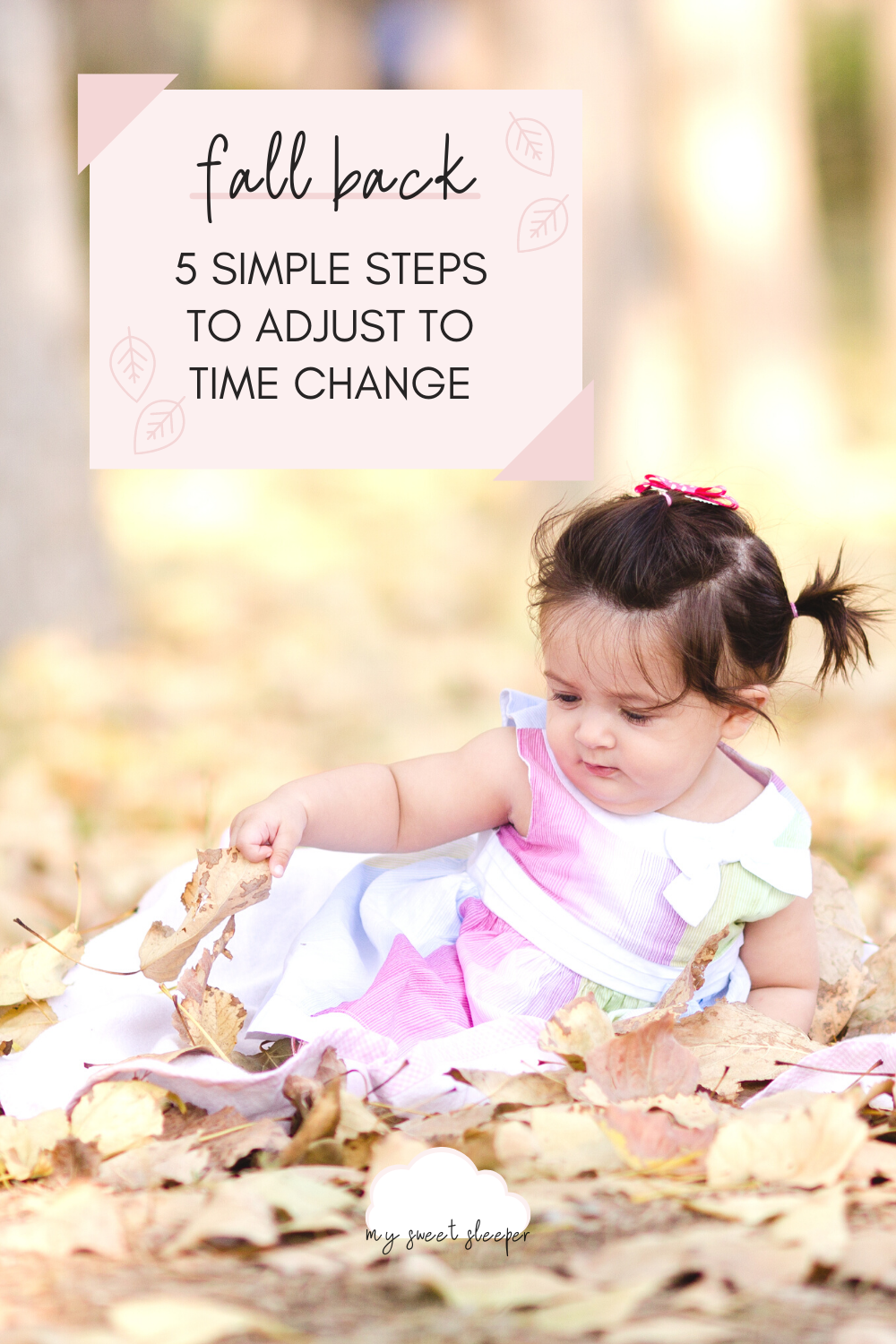Fall back: Simple steps to prepare your child for the end of daylight saving
Updated 2024
The end of daylight saving time always seems to be a challenging time for parents. As if we don’t have enough change to deal with, this season brings another difficult shift as we move to “shorter days.”
Personally, it is always hard for me to accept that we only get the sun until 4:30pm, making dinnertime, bedtime, and everything else feel totally off. And even though we “gain” an hour of sleep, the thought of trying to re-work nap and bedtimes is enough to give any parent a headache.
The good news is, there are ways to minimize the effects of this time shift so that it doesn’t wreak havoc on your child’s sleep schedule. By preparing for the end of daylight savings a couple weeks ahead with these six steps, it will hopefully be a seamless transition once it’s time to actually “fall back.”
1. Start practicing a slightly later bedtime now, 4-8 days before the time change.
To prepare for the “fall back,” you can move your child’s bedtime gradually later (about 10/15 min each night) over the week prior so that they feel ready for sleep once we change the clocks. This also helps to prevent your child from becoming overtired, which can affect both daytime and nighttime sleep.
This can be an adjustment your entire family follows as well. If your child’s normal bedtime is at 7:30pm, try starting your routine at about 7:45, then a couple of nights later 8pm, and continue letting your child slowly adjust over the next couple days, 10-15 minutes at a time to a later bedtime. When the time change occurs, your child’s new 8:30pm bedtime will suddenly be 7:30pm once again. With this gradual change, the hope is that morning wake-ups will get later and later, as well.
2. Anticipate early risings and be prepared.
If you’re moving bedtime later, hopefully your child isn’t still waking early, but it is possible, because anytime there is a shift in sleeping patterns, our cycles can feel a bit off. If your child wakes early, try allowing them time in their crib/room to hang out (assuming they don’t become upset) and encourage that independent time before getting them up. If your child is a bit older, you may want to invest in an ok-to-wake clock, which gives the green light once it’s time to get up for the day!
3. Be mindful of exposure to sunlight and darkness throughout the day/evening.
Our body’s internal sleep cycles (circadian rhythm) are regulated by light and darkness and heavily influenced by our environment. This is why we often become sleepy once it starts to get dark, and many of us wake up with the sun. You can help your child’s 24-hour sleep cycle by exposing them to light first thing in the morning and throughout the day, with their last sun exposure around 4pm. If your child’s bedtime is typically late (as in, past 8pm), you may want to consider moving it up slightly since their body will likely become tired earlier as a natural result of having darkness earlier.
4. Base naptimes off of awake windows and stay consistent.
If you’re currently following a nap schedule, you may find that your child needs to sleep earlier or later than usual, depending on awake times. You want to follow awake times more closely for the first couple weeks, as opposed to the clock, since sleep might be disrupted a bit. For example, if your child wakes really early, you want to shorten that morning awake window so they aren’t overtired throughout the day. If you notice that one nap suddenly becomes unusually long, you can try to wake them up at their normal nap length or slightly later (one of the only times you should wake a sleeping baby) and attempt to keep other naps as normal as possible throughout the day.
After a few weeks, you want naptimes to be pretty close to where they were before, so if that isn’t happening and it seems like naps are all over the place, your child might be having a hard time adjusting. That might be the time to reach out to us for some additional guidance/help!
5. Try not to make any other major changes right now.
I recommend treating daylight saving time like development leaps, making sure to put an extra emphasis on rest and avoiding too much at once. If you’re thinking of potty training or switching up sleep environments, it might be best to put that on hold for a couple weeks until everyone has adjusted.
6. Try to be patient and not worry.
As we all know, the effects of sleep deprivation impact the entire family. Children are just as confused about the time change as we are, and although our bodies will adjust naturally (eventually), some have a harder time than others. If you notice meltdowns become a bit more frequent after the time change, try and remember that lack of sleep could be the culprit. I encourage you to set aside more quiet time and maybe even an extra nap while you all try to adjust to this new season.
Just remember, you’ll get through this time, and try not to worry or change anything drastically in order to over-correct sleep. It will fall into place, but some children are more sensitive sleepers than others (and that’s okay!)
Related articles:
How to help your child adjust to DST and season changes.
Daylight savings pros and cons during pregnancy.
How Seasonal Affective Disorder can impact your sleep and what you can do about it.

